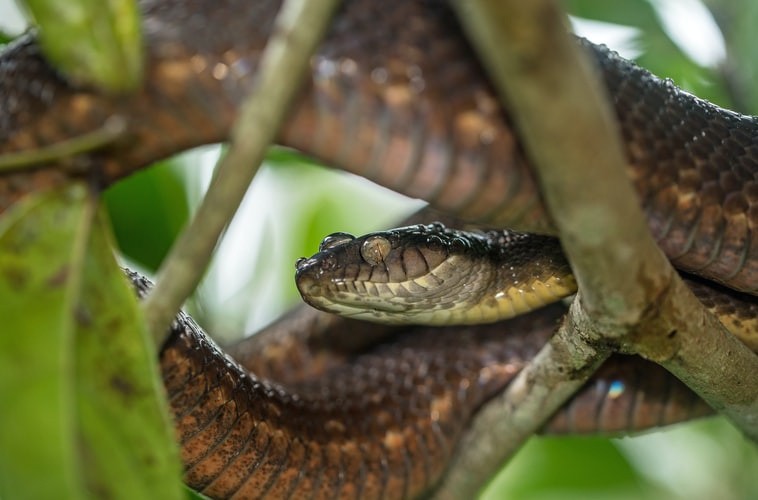Snakes slither, sidewind leap, and undulate. Those are their standard means of movement. However, just recently, scientists discovered a completely new method of serpentine movement, looping like lassos.
The looping movements are demonstrated by the invasive brown tree snakes. Locals claim the bizarre move arguably made the invasive species a more potent problem.

Brown Tree Snake
Brown tree snakes are relatively small snakes that inhabit the trees of Australia and several other Pacific islands.
Related Article : Kukri Snake Slices Toads Open and Eat Their Organs While Still Alive
Invasion in Guam
This species was inadvertently brought by cargo ships to Guam after World War II.
After they arrived in the territory, the snakes rapidly invaded the local ecosystem, hijacking the local wildlife and even causing significant dents to indigenous species and effectively driving 10 species of native birds extinct.
Needless to say, this invasive species obliterated Guam's ecosystem.
The local wildlife authorities stepped in to attempt to stop the ecological invasion. They tried to control the snake species and mitigate the damages they caused by releasing drugged-up mice to poison the serpents, paid locals to hunt down the species, and countless other attempts. They even tried to employ the aid of snake detecting dogs.
Unfortunately, the attempts were unsuccessful.
Lasso Movement
While trying to develop a plan and create concrete strategies to stop the snake infestation, scientists were baffled by their new discovery.
To study their behavior, in a laboratory, they set fastened a platform to a three-foot-tall, eight-inch-wide stovepipe over the top half of a six-foot-tall metal pole where two mice live in a cage on top. They placed the contraption in an enclosure with 58 brown tree snakes inside.
Snakes usually have hard times climbing, or slithering, up a smooth cylindrical surface.
While reviewing the footage they recorded overnight, the scientists were amazed by what they discovered.
"We looked at each other in total shock because this was not anything that we expected or had ever seen," says wildlife biologist Thomas Seibert. "We had to watch this over and over just to be sure that we were seeing what we thought we were seeing."
In the video, the snake that attempted to get the mice bait showed a fantastic new movement method to find a way above the smooth surface. It wrapped its tail around the pole, then grabbed the other end of its body to create a loop like a form and a shimmy up to the mice cage.
This movement has never been recorded by any snake, or animal in general, expert.
The scientists dubbed it the "lasso locomotion."
"I would never have thought in my wildest dreams that a snake would move in this fashion," says co-author and University of Cincinnati biomechanics specialist Bruce Jayne, who has studied snake locomotion for over 40 years.
To understand the lasso locomotion, scientists created a new experimental set up at the USGS (the United States Geological Survey) laboratory in Guam. They hoped to see similar results, and they did.
The first snake showed that its action was not an isolated case as five more from the brown tree snake species showed the capability to do such movements.
How did the discovery help the efforts to combat the invasion?
Because of this odd locomotion method, scientists were able to identify how these tiny snakes could obliterate hundreds if not thousands of bird nests. After the discovery, the nests were then relocated to a safer area.
It might not have totally removed the species in Guam, but the wildlife authorities now have insights that might lead to possible solutions to fight the brown tree snake invasion.
For more news updates about the animal kingdom, don't forget to follow Nature World News!
© 2025 NatureWorldNews.com All rights reserved. Do not reproduce without permission.





